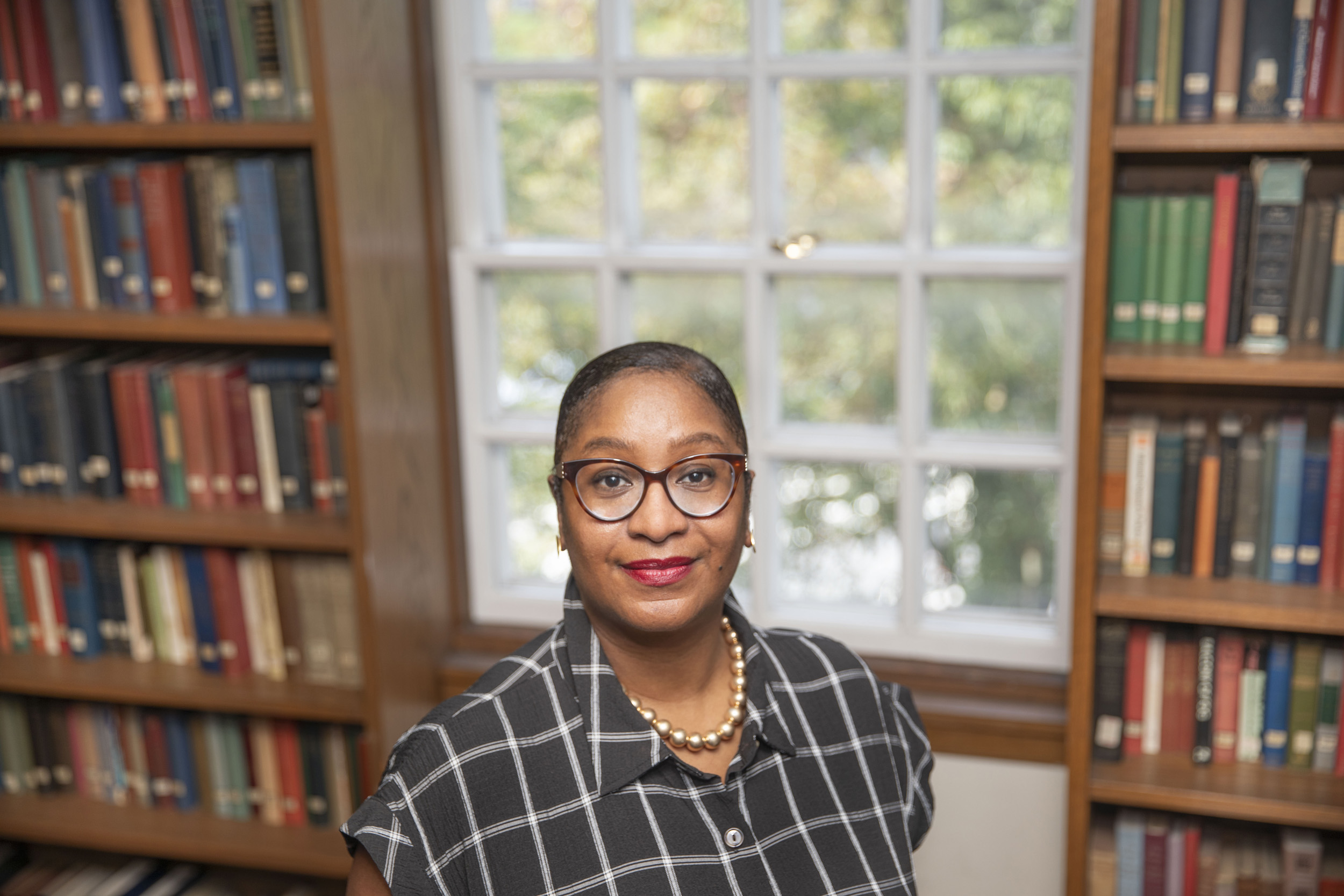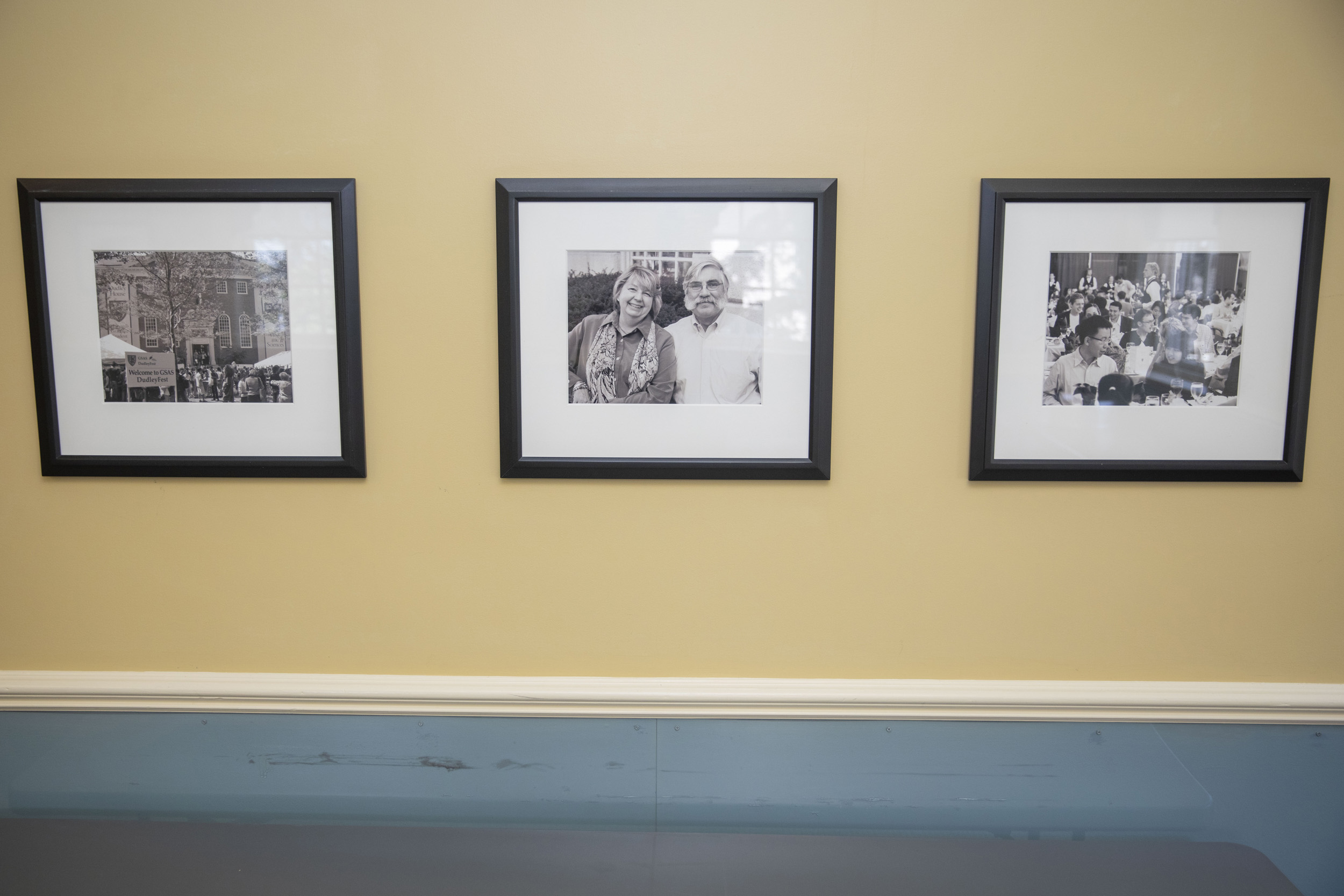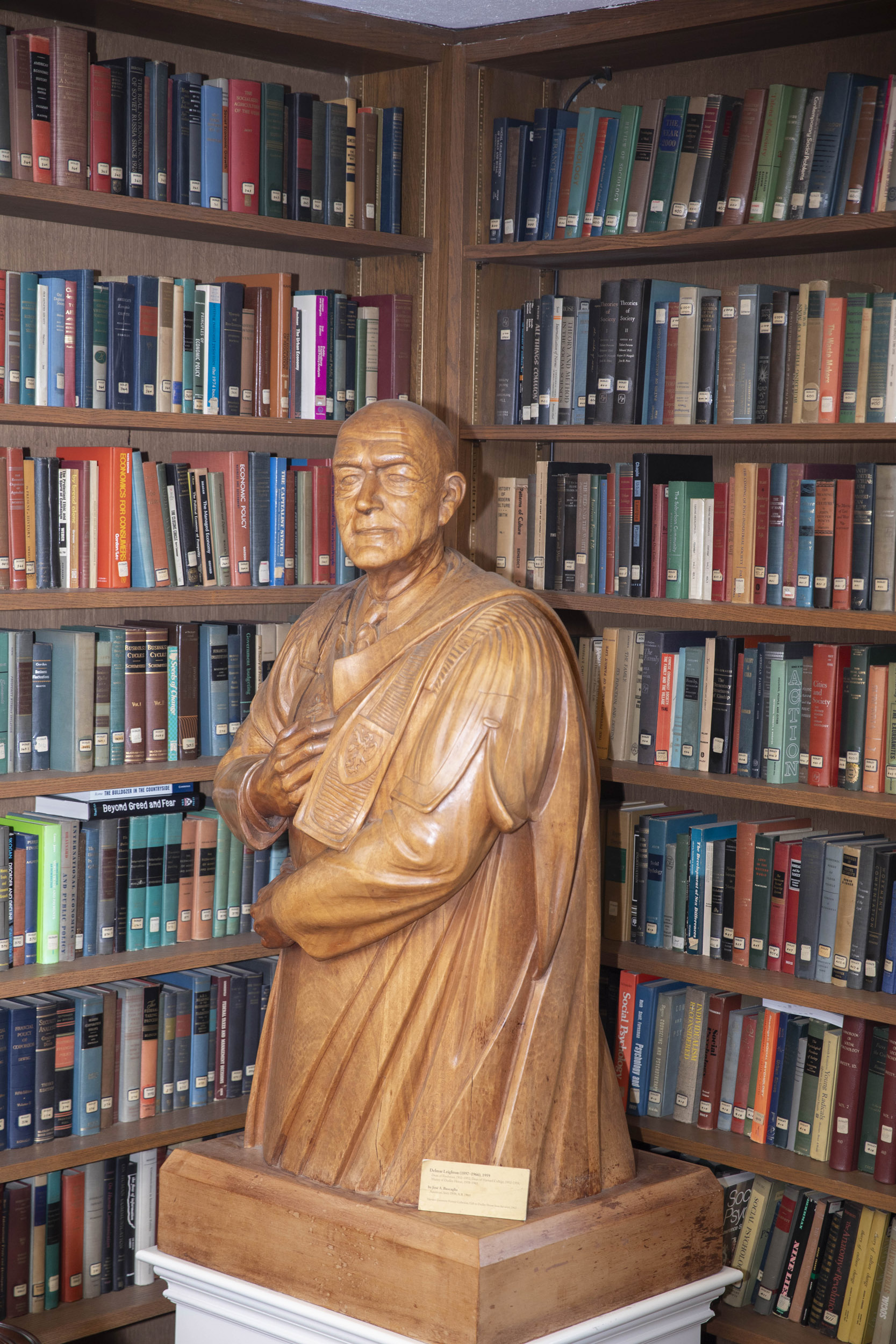
Photos by Kris Snibbe/Harvard Staff Photographer
Refreshing Harvard’s halls and walls to reflect ‘21st-century ethos’
Campus curator Brenda Tindal discusses plans to update spaces while honoring past
The hardcover books lining the walls of Dudley Library are well-worn, but hardly used these days in what’s become primarily a gathering space in Harvard’s graduate student center in Lehman Hall. Photographs of former House administrators, dating to when the Dudley community lived in the building, still decorate a hallway.
Brenda Tindal — who as campus curator is tasked with overseeing visual culture and signage across the Faculty of Arts and Sciences — sees both as opportunities for change.
“We’re identifying ways to make sure graduate students see themselves and feel like the [Student Center at Harvard Kenneth C. Griffin Graduate School of Arts and Sciences] is really a home away from their home academic departments. That it is a place where they can ensure that there is no poverty of imagination as they undergo their graduate work, but also a social space where they interface with the vast and interdisciplinary graduate school community — students, faculty, and administrators,” Tindal said. “The visual culture and overarching ethos of the center is so key to our graduate students — feeling not only part of Lehman Hall, but part of the Harvard community writ large.”
In Dudley Library for instance, objects, photographs, ephemera, and select artworks will be archived for perpetuity, while books will be de-accessioned and returned to appropriate University collections. The overarching goal is to create a space that is in greater alignment with the ethos, needs, and aspirations of the current community.

Work at Lehman Hall, which begins in earnest this fall, is but one priority area for Tindal (the Faculty Room in University Hall and Annenberg Hall being the others). Tindal is partnering with Harvard Griffin GSAS and the College to determine ways to preserve the integrity of the building’s history.
Tindal, who was named the inaugural FAS chief campus curator in February, initiated a series of listening sessions with stakeholders throughout the faculty and plans to continue doing so throughout the fall. Her upcoming priorities include listening sessions with undergraduate and graduate students about the Annenberg Hall and Student Center at Harvard Griffin GSAS in Lehman Hall projects, respectively, and strategic conversations with faculty regarding the faculty room in University Hall.
“Our visual culture should reflect the breadth and diversity of Harvard’s broader historical narrative and 21st-century ethos. Right now, there is a homogeneity of ideas embedded in our visual environment,” Tindal said.
Her goal has been to highlight a variety of ideas, artistic expressions, members of the community past and present, and “the interdisciplinary prowess” of the University.
“Ultimately, I want the next generation of students to see themselves more intentionally represented on our walls and within the built environment.”


Items to be archived include a wooden sculpture of former Dean Delmar Leighton, Class of 1919, and a painting by Shan Shan Sheng presented to Dudley House in honor of Arthur and Lotje Loeb.
Tindal’s work covers roughly 300 shared co-curricular buildings and 11 million square feet of campus. After transitioning from her position as executive director of the Harvard Museums of Science and Culture last spring, she has turned her attention to building the infrastructure of her larger work. This entails understanding the full scope of collections held by Harvard’s museums and libraries, developing a community of practice and policies to guide renewal efforts, working with University partners to enable digital curation with cross-institutional collections, and hiring staff to support and implement an ever-expanding portfolio.
Along with making sure the University’s visual culture represents its community, Tindal is also tasked with making the FAS more accessible. That work will include labeling objects installed across campus, thinking about the readability of texts, considering the usage of QR codes, and making sure that accessibility is part of the design process, Tindal noted.
“Leveraging technology, human-centered design, and an inclusive community of practice are central to my curatorial praxis,” said Tindal, who serves on the University Accessibility Committee (UAC) and plans to work intentionally with the Office of Disability Services and other Equity, Diversity, Inclusion, and Belonging campus partners.
“I want to sit with students, faculty, and staff who frequent our campus and live and work in our buildings. Being in dialogue with our campus community is critical in order to ensure that I’m informed by a diverse chorus of voices and a cross-section of perspectives as we reimagine our visual cultural ecosystem.”
While Tindal’s work prioritizes different stakeholders at the FAS, she said she hopes to also reach the thousands who visit the University.
“I really want people to not just see our campus as a cabinet of curiosity,” Tindal said. “I really want people to not simply look — I want them to understand. The work ahead is about transforming the gaze through the dynamic curation of our campus, while prioritizing our mission to be a welcoming and inclusive depot for the Harvard community and beyond.”




